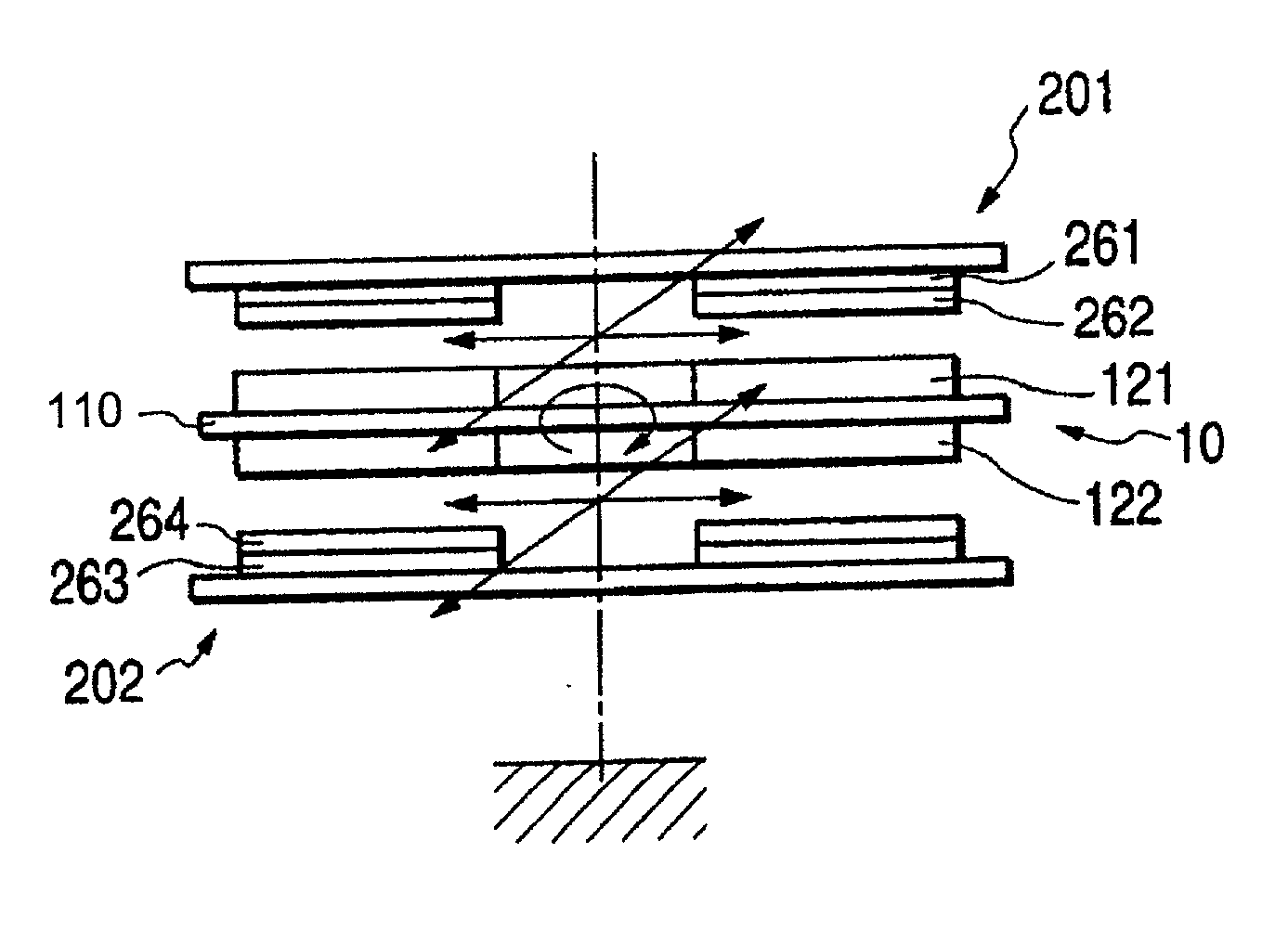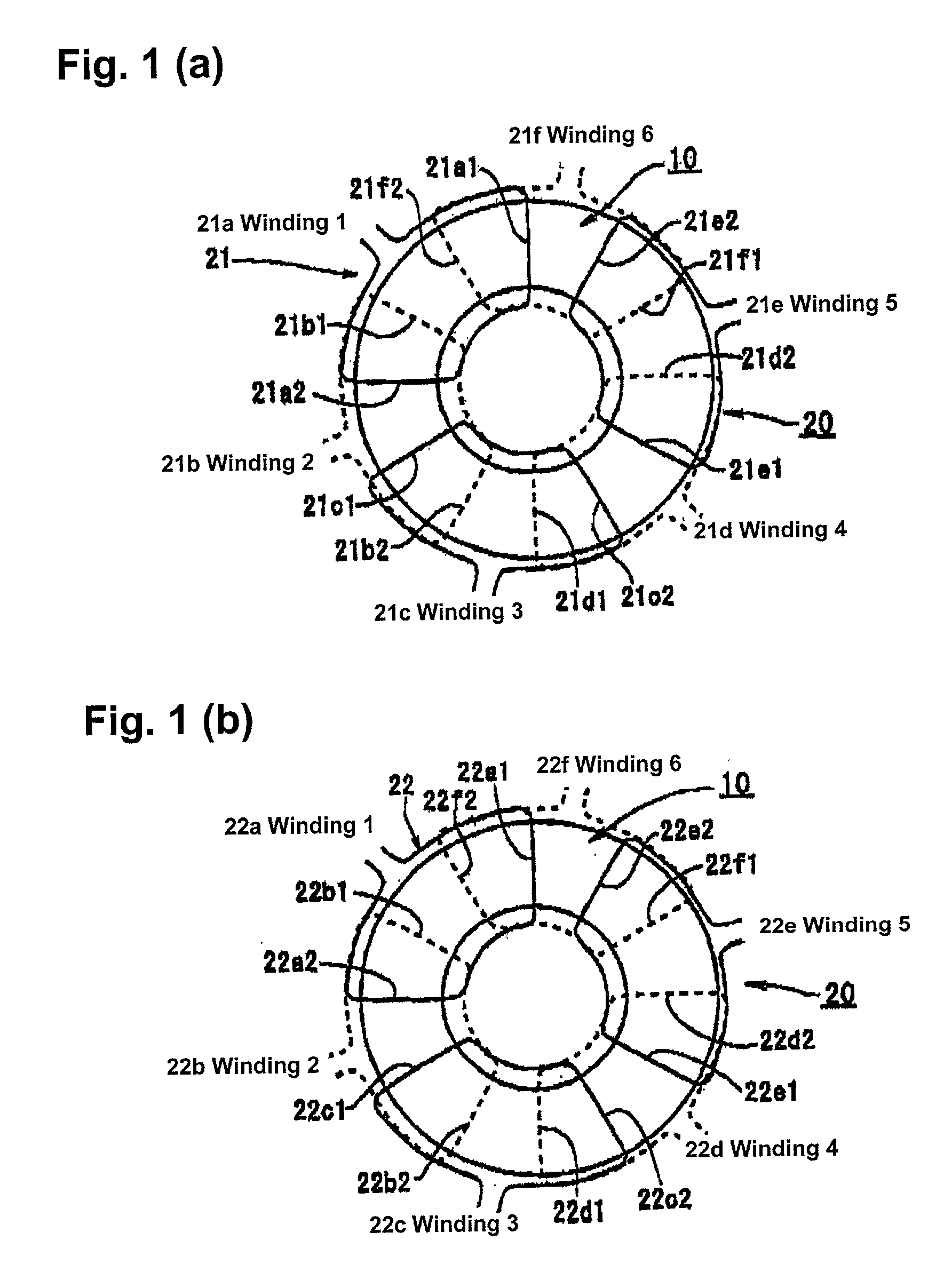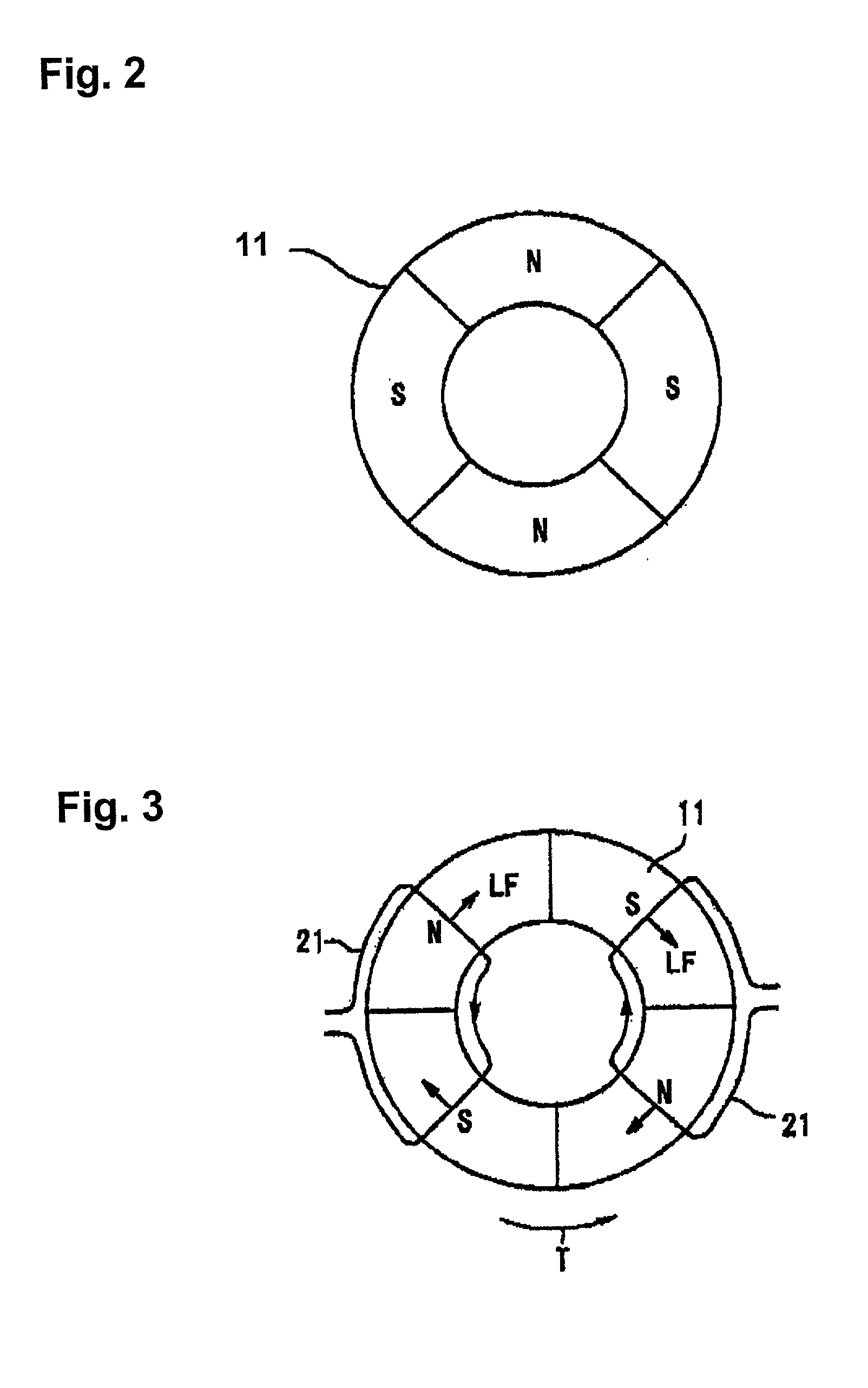Magnetically levitated motor
a technology of magnets and motors, applied in the direction of mechanical energy handling, mechanical apparatus, windings, etc., can solve the problems of complex structure, difficult to increase the speed of the motor, and complex control of the levitation for
- Summary
- Abstract
- Description
- Claims
- Application Information
AI Technical Summary
Benefits of technology
Problems solved by technology
Method used
Image
Examples
Embodiment Construction
[0026] A magnetically levitated motor in accordance with one embodiment of the present invention is described below with reference to the accompanying drawings. First, principles for generating rotational torque and levitation force (bearing force) with windings and rotor magnets are described prior to a concrete description of the structure of the magnetically levitated motor.
[0027] First, to generate a rotational torque, currents that are in phase are conducted in diagonally located two windings in a winding group for rotation 21, as shown in FIG. 3. Lorentz forces LF that are opposite to each other are generated in the windings based on the currents. As a result, a rotational torque T is generated. In the mean time, to generate a levitation force (bearing force), currents having opposite phases are conducted in diagonally located windings in a winding group for bearing 22, as shown in FIG. 4, to thereby generate Lorentz forces LF in the same direction by the currents to generate ...
PUM
 Login to View More
Login to View More Abstract
Description
Claims
Application Information
 Login to View More
Login to View More - R&D
- Intellectual Property
- Life Sciences
- Materials
- Tech Scout
- Unparalleled Data Quality
- Higher Quality Content
- 60% Fewer Hallucinations
Browse by: Latest US Patents, China's latest patents, Technical Efficacy Thesaurus, Application Domain, Technology Topic, Popular Technical Reports.
© 2025 PatSnap. All rights reserved.Legal|Privacy policy|Modern Slavery Act Transparency Statement|Sitemap|About US| Contact US: help@patsnap.com



